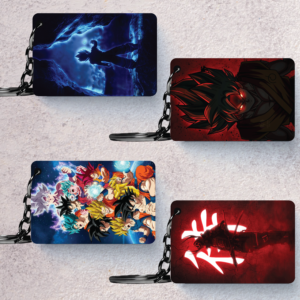Introduction to Corporate Networking
Networking is a vital aspect of corporate events, offering professionals the chance to build relationships, share ideas, and explore potential collaborations that can drive business success. In today’s fast-paced business environment, simply attending events isn’t enough; actively engaging in strategic networking is essential. Enhancing networking opportunities at corporate events involves creating an environment where connections can flourish naturally, and conversations are encouraged. This can be achieved by carefully planning the event layout, incorporating interactive sessions, and providing ample opportunities for informal interactions. By fostering a culture of openness and facilitating meaningful exchanges, businesses can maximize the value of their events, ensuring that participants leave with new contacts, fresh insights, and a stronger professional network.
Why Networking Matters in Business
In today’s business landscape, who you know is often as important as what you know. Networking opens doors to collaborations, partnerships, and opportunities that might otherwise remain out of reach. It’s an essential skill for anyone looking to grow professionally or expand their business.
The Evolution of Networking at Corporate Events
Networking has come a long way from the days of exchanging business cards over cocktails. Today, corporate events are designed with networking in mind, offering more structured opportunities to connect. From networking apps to virtual reality experiences, the tools and techniques have evolved, making it easier than ever to build meaningful connections.
Pre-Event Networking Strategies
Before the event even begins, there are several strategies you can employ to maximize your networking potential.
Leveraging Social Media to Connect Beforehand
Social media platforms like LinkedIn and Twitter offer excellent opportunities to connect with other attendees before the event. By engaging in conversations, sharing relevant content, and reaching out to fellow participants, you can lay the groundwork for meaningful interactions at the event.
The Importance of Pre-Event Meetings
Pre-event meetings are another powerful tool for networking. They allow you to establish rapport with key individuals before the event starts, ensuring that you have a strong foundation for further discussions.
Scheduling One-on-One Meetings
If there are specific people you’d like to connect with, consider scheduling one-on-one meetings. This gives you the chance to have focused conversations without the distractions of the main event.
Hosting Pre-Event Webinars
Hosting or attending pre-event webinars can also be beneficial. These sessions provide a platform to share insights and engage with participants, setting the stage for deeper connections during the event.
Designing Corporate Events for Maximum Networking
The way an event is designed can have a significant impact on networking opportunities.
Event Layout and Its Impact on Networking
The layout of the event space plays a crucial role in facilitating networking. By creating an environment that encourages interaction, you can help attendees connect more easily.
Creating Interactive Spaces
Interactive spaces, such as lounges or breakout rooms, encourage attendees to engage in conversations. These areas are designed to be comfortable and inviting, making it easier for people to strike up a conversation.
The Role of Lounge Areas
Lounge areas serve as informal networking hubs where attendees can relax and connect in a less structured setting. These spaces often feature comfortable seating, refreshments, and a relaxed atmosphere that fosters interaction.
Incorporating Networking Breaks
Structured networking breaks are an essential component of any corporate event. These breaks provide designated times for attendees to mingle and make connections.
Structured vs. Unstructured Networking
Structured networking involves organized activities or sessions designed to help attendees connect, while unstructured networking allows for more spontaneous interactions. Both have their place at corporate events, and a balance of the two can be most effective.
Using Technology to Facilitate Connections
Technology can play a significant role in enhancing networking opportunities at corporate events.
Networking Apps
Many corporate events now offer dedicated networking apps that allow attendees to connect, schedule meetings, and engage with each other before, during, and after the event. These apps often include features like attendee directories, messaging capabilities, and personalized schedules.
Virtual Reality Networking
Virtual reality (VR) is an emerging technology that offers unique networking opportunities. VR can create immersive experiences that bring attendees together in a virtual space, allowing for more engaging and memorable interactions.
Engaging Attendees During the Event
Keeping attendees engaged is key to successful networking.
Icebreaker Activities
Icebreakers are a great way to get attendees talking and feeling comfortable with one another. Whether it’s a fun game, a quick introduction session, or a creative activity, icebreakers can set the tone for a productive networking experience.
Interactive Workshops and Roundtables
Interactive workshops and roundtable discussions encourage participants to share their ideas and experiences. These sessions are ideal for fostering connections, as they bring together people with similar interests and challenges.
Utilizing Event Hosts and Facilitators
Event hosts and facilitators play a crucial role in guiding discussions and ensuring that networking opportunities are maximized.
Role of Moderators in Networking
Moderators can help steer conversations, introduce participants to each other, and create a more inclusive atmosphere. Their presence can be especially valuable in larger events where attendees might feel overwhelmed.
Encouraging Participation Through Gamification
Gamification is a fun and effective way to encourage participation and networking. By incorporating elements like leaderboards, points, and rewards, you can motivate attendees to engage more actively with each other.
Post-Event Networking Strategies
The networking doesn’t stop when the event ends. Post-event strategies are just as important for maintaining and building upon the connections made during the event.
Follow-Up Emails and Messages
Sending follow-up emails and messages is essential for keeping the conversation going after the event.
Timing Your Follow-Up
Timing is everything when it comes to follow-ups. Sending a message within 24-48 hours of the event keeps the interaction fresh in the recipient’s mind.
Personalizing Follow-Up Communication
Personalization is key to making your follow-up stand out. Mention specific topics you discussed, express your interest in continuing the conversation, and suggest next steps.
Sharing Event Content for Continued Engagement
Sharing content from the event, such as presentations, videos, or articles, is a great way to stay connected with attendees. It keeps the event top of mind and provides a reason for continued interaction.
Leveraging Post-Event Surveys to Foster Connections
Post-event surveys not only provide valuable feedback but can also be a tool for networking. By asking attendees to share their contact information or interest in follow-up activities, you can create additional opportunities for connection.
Conclusion
Enhancing networking opportunities at corporate events is essential for fostering meaningful connections that drive professional growth and business success. By thoughtfully designing the event environment, incorporating interactive activities, and leveraging technology, organizers can create a dynamic atmosphere where attendees feel encouraged to engage with one another. Prioritizing inclusivity and diversity in networking sessions ensures that everyone has the chance to build valuable relationships. Additionally, providing clear guidance and tools, such as networking apps or facilitated introductions, can help participants overcome barriers to interaction. Ultimately, the key to successful networking lies in creating an experience that not only brings people together but also empowers them to exchange ideas, collaborate, and form lasting partnerships. With careful planning and a focus on the needs of the attendees, corporate events can become powerful platforms for building strong networks that benefit both individuals and organizations.









